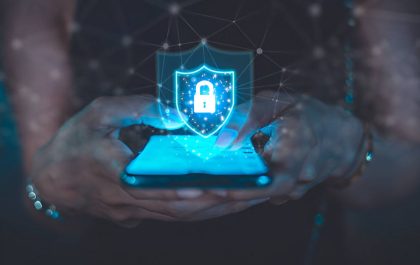The holidays are a time for joy, celebration, and connection. They can also be a time when cybercriminals are on the prowl. With so many people shopping online or sending email to friends and family, it’s essential to be aware of potential threats to your security during this busy time of year.
This post will discuss how to protect yourself from email spoofing and other cyberattacks during the holiday season.
Table of Contents
ToggleWhat is Email Spoofing?
Email spoofing is when someone uses a false email address to appear as if they are sending the emails from a legitimate source.
Spoofing is commonly used in phishing scams where cybercriminals try to get personal information or money from unsuspecting victims.
Spotting Spoofing
There are a few telltale signs that you can look for to spot a spoofing scam:
Typos and Grammatical Errors: Many scammers are not thinking about language, so their emails often contain errors.
Unexpected Attachments or Links: If you receive an email from someone you know with an attachment or link you weren’t expecting, their account may be compromised by a spoofing scammer. In these cases, it’s best not to open the attachment or click on the link, as doing so could install malware on your computer or redirect you to a phishing website.
Threats or Unusual Language: Some email spoofing scams contain threats or use unusual language to try and scare the recipient into acting quickly. For example, a scammer may claim that your bank account will close unless you click on a link and provide personal information. The criminals may even threaten legal action if you don’t respond to the email within 24 hours.
How to Avoid Email Spoofing Scams
Spotting email spoofing scams can be challenging, but if you know what signs to look for and take steps to protect yourself online, you can minimize the risk of falling victim.
Here are a few simple ways to avoid the dangers of email spoofing:
Check Your Sources
If you receive an email that looks suspicious, always double-check the sender’s address before responding. Legitimate businesses will never send out emails from unknown third-party sources.
Additionally, if an email includes requests for information that seems unusual or out of place, it’s best not to respond until you have verified the source of the email. You can do this by contacting the company directly.
Enable Multi-Factor Authentication (MFA)
MFA adds an extra layer of security to your account by requiring more than just a username and password when logging in. MFA typically requires you to enter a code sent via text message or generate an access token on an app such as Google Authenticator before gaining access to your account.
This helps prevent attackers from gaining access even if they can guess or crack your password.
Security Software
It’s important to make sure your computer security software is updated and installed before shopping online or sharing personal information with others via email.
Antivirus programs can help protect your data from malicious users or programs while browsing online— firewalls can prevent suspicious traffic from entering your system when connected to public Wi-Fi networks.
Final Thoughts
Don’t get caught off guard by email cybercriminals this holiday season.
Stay on the lookout for typos and grammatical errors, unexpected attachments or links, and threats or unusual language. Remember to protect yourself by checking your sources, enabling MFA, and using security software.
These simple steps can help you keep your holiday season merry and bright.
Related posts
Hot Topics
Mobile Threat Defense: The Silent Shield Behind Every Secure App
Mobile apps are found everywhere in India’s rapidly developing digital landscape—from banking and online shopping to healthcare and learning. And…
How to Get Started with Crypto Trading: A Complete Beginner’s Guide
I was completely shocked when I began trading in cryptocurrency. I was there, seeing numbers arranged like an abstract painting,…



